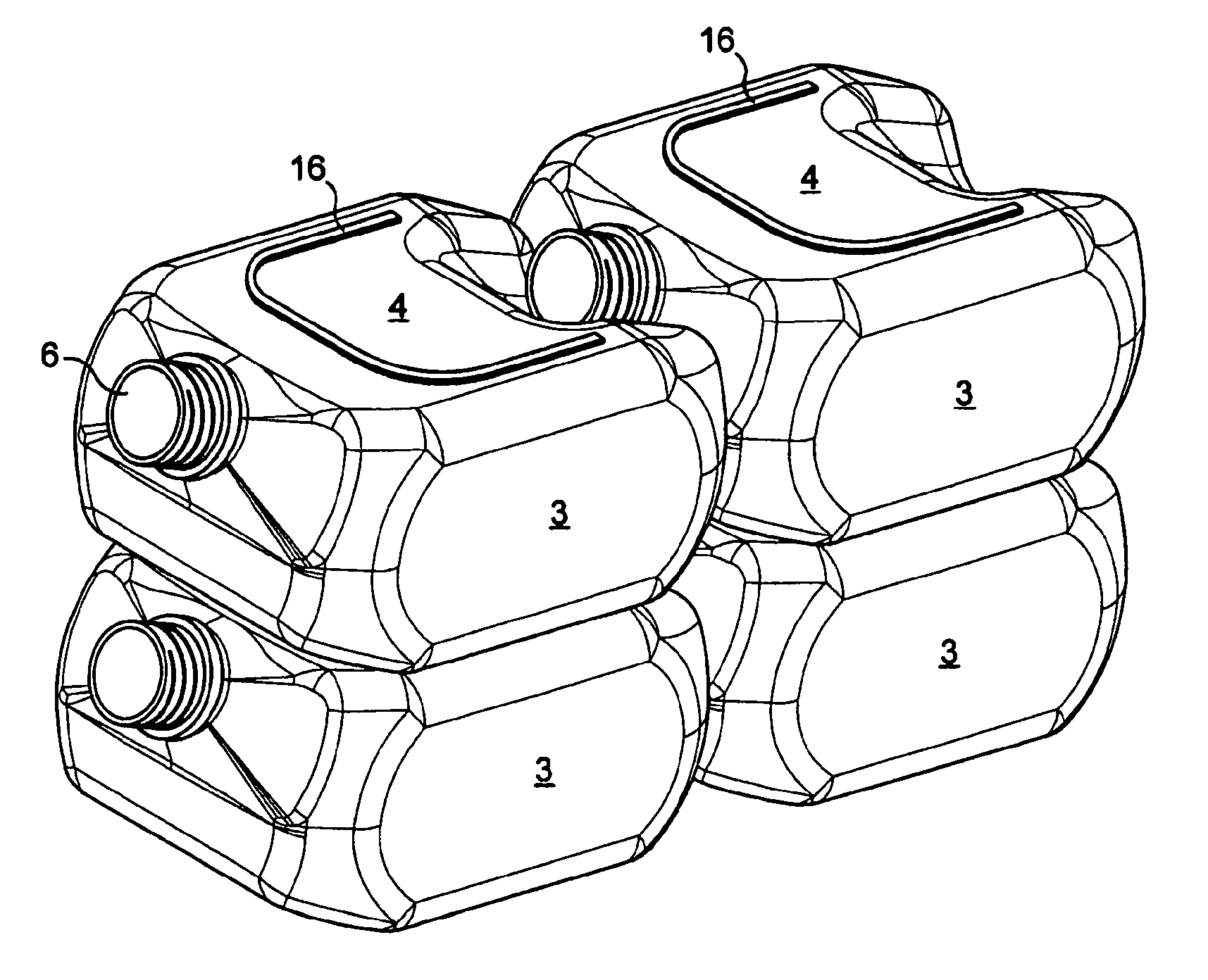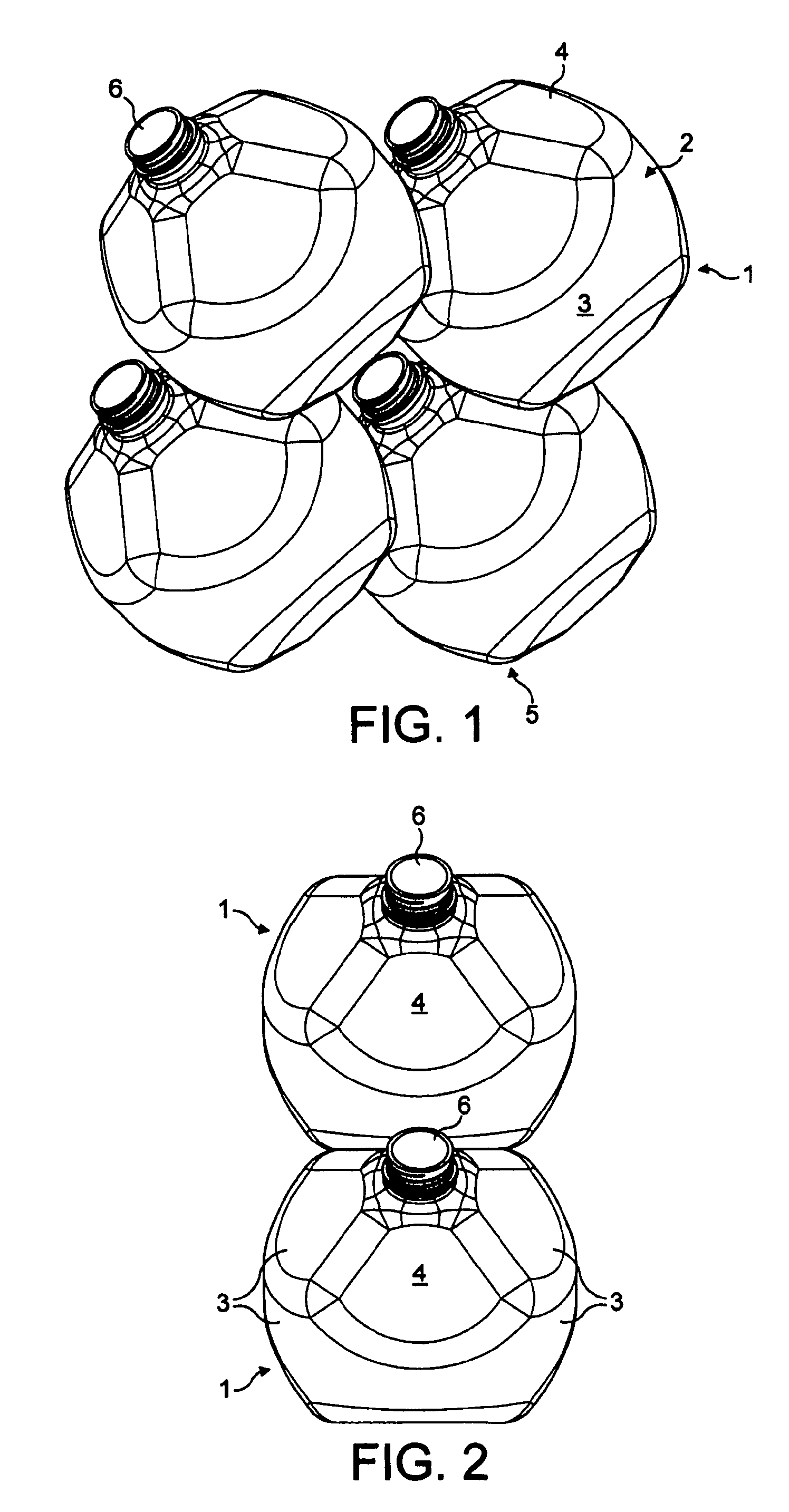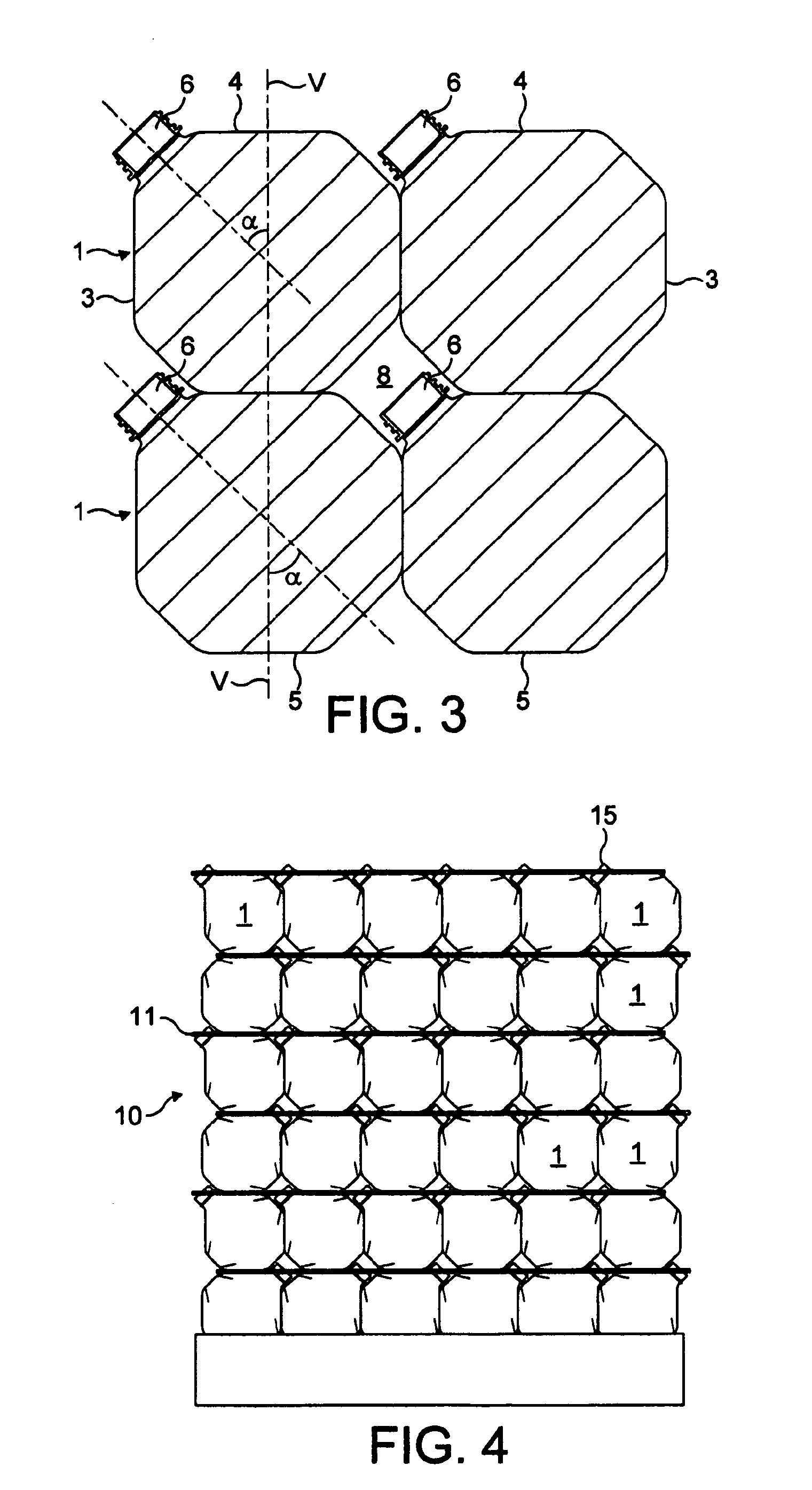Stackable package and a packaging assembly made therewith
a packaging and stacking technology, applied in the field of stackable packages, can solve the problems of increasing complexity and cost, affecting the stability of pallets, and requiring quite a large amount of packaging materials, so as to improve the overall package assembly and increase the top-load resistance of packages.
- Summary
- Abstract
- Description
- Claims
- Application Information
AI Technical Summary
Benefits of technology
Problems solved by technology
Method used
Image
Examples
Embodiment Construction
[0041]In FIGS. 1 and 2 is illustrated a stack of semi-flexible stackable packages 1 for containing mineral water. Basically, each package according to the invention is produced by blow-moulding polyethyleneterephtalate (PET) material such that less than 15 g, preferably less than 13 g, is necessary for blowing a package having a contents volume of at least 1 liter, and wherein 40 g of polyethyleneterephtalate (PET) or less are necessary for blowing a package having a contents volume of at least 3 liters.
[0042]Each package 1 in the stack comprises a package body 2 with side 3, top 4 and bottom 5 walls, and a neck 6 adapted to receive closing and / or dispensing means that extends outwardly from said top wall 4. The package that will be described hereafter as an example with reference to the drawing, is a polyethyleneterephtalate (PET) blow-molded bottle, having a thickness in its side walls portion that is lower than or equal to 100 μm.
[0043]As shown in FIG. 3, the neck 6 is off-centre...
PUM
 Login to View More
Login to View More Abstract
Description
Claims
Application Information
 Login to View More
Login to View More - R&D
- Intellectual Property
- Life Sciences
- Materials
- Tech Scout
- Unparalleled Data Quality
- Higher Quality Content
- 60% Fewer Hallucinations
Browse by: Latest US Patents, China's latest patents, Technical Efficacy Thesaurus, Application Domain, Technology Topic, Popular Technical Reports.
© 2025 PatSnap. All rights reserved.Legal|Privacy policy|Modern Slavery Act Transparency Statement|Sitemap|About US| Contact US: help@patsnap.com



